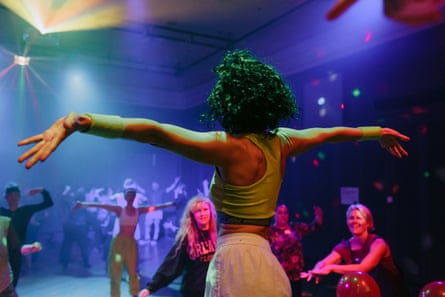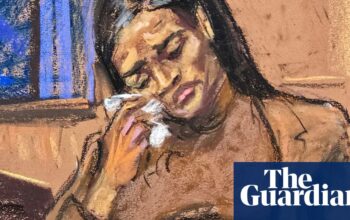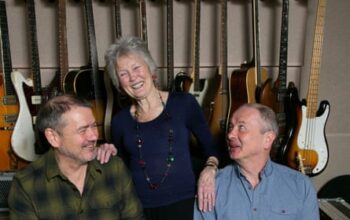I
I used to dislike raves. As a Deaf woman, I often did not feel at ease in club and party settings. After multiple instances of being left out or facing unwanted advances, sexual harassment, and assault, I had formed a negative perception of these environments as threatening and hazardous. This sentiment was shared by many of my Deaf and disabled acquaintances.
I have had a passion for dancing since I was a young child. At the age of six, I would joyfully skip and twirl everywhere I went, whether it was walking with my parents or waiting in line at the local pool. I would also spend hours watching videos of dance performances. I was so dedicated that I even asked my school principal for permission to use the school hall during lunch breaks so I could practice my moves, and I even convinced my Deaf classmates to join me.
I was born Deaf in a small town in northern New South Wales and I am the only Deaf person in my family. The doctors were unsure of the reason for my Deafness. I stopped dancing during high school because I believed I could not pursue it professionally. Apart from the occasional visit from the Australian Theatre of the Deaf, there were no Deaf artists for me to admire. However, at the age of 20, I saw Bangarra perform and everything changed. Their performance inspired me to pursue dance and reignited my passion for it. Their celebration of Indigenous cultures and languages helped me realize that I could also celebrate my Deaf culture, community, and language through dance.
My life is heavily influenced by both the dance world and the Deaf world, but they are often quite separate. As a Deaf professional dancer for 10 years, I frequently switch between these two communities. Being the only Deaf dancer, I constantly face challenges in navigating a world that has historically been discriminatory towards those with disabilities and hearing loss. Even with the presence of sign language interpreters, I must adjust and accommodate for those who can hear. It can be exhausting to constantly advocate for my access needs, and keeping up with casual conversations can be impossible. It takes me longer to internalize the music and rhythms, as I do not wear hearing aids and rely on body memory and peripheral vision to learn choreography.

As a professional dancer in the Deaf community, I often feel isolated due to the lack of representation. When asked about my profession, I am often met with confusion. It is disheartening to see that many Deaf individuals believe that dancing is not for them simply because of their deafness. Unfortunately, Deaf individuals are often discouraged from pursuing various activities, including dancing. It saddens me that dancing is frequently disregarded as an option for Deaf and disabled individuals.
In my thirties, I experienced a series of realizations that changed my perspective on raves, my physical appearance, my ability to express myself, my sense of liberation and sexuality, and my longing for companionship.
The first was an exhilarating and euphoric night in San Francisco, at the afterparty of the International Deaf Dance festival. The dancefloor was heaving with Deaf people. Even the DJ was Deaf. We guided each other through dance routines, taking turns to get on stage and give out instructions in international sign language.
Disregard the advertisement for the newsletter.
after newsletter promotion
During our trip to Cuba, we encountered some residents who kindly invited us to go dancing with them. This took place two weeks after Hurricane Irma, so we descended down some damp stairs into a dripping cave. It felt like we had walked into a scene straight out of Dirty Dancing. As we danced and swayed together, there was a palpable feeling of shared happiness, as we moved across the slick floors, feeling the heat of our bodies and the rhythms of salsa.
During my visit to Berlin’s Kit Kat Club, I observed how individuals were utilizing the club’s environment as a means of sensual discovery. I was particularly moved by a shibari performance and the profound impact it had on the woman involved. Another woman checked in on my well-being and ensured that I was enjoying myself. This gesture left a lasting impression on me, as it showed a sense of care and mutual responsibility among the club’s attendees.
I carried those three encounters with me for a considerable period. However, they also sparked inquiries within me. Was it possible that raves, which I had previously despised, could also serve as places of liberation, solace, and recovery? I was intrigued by the potential to unite the worlds of dance and the Deaf community, creating a sense of unity, camaraderie, and empowerment.
I developed SPIN, a lively and engaging dance party featuring Deaf hosts and a DJ. SPIN serves as an invitation, a challenge, an exploration, and a representation of ritual, resilience, resistance, submission, inquisitiveness, and lightheartedness. The first performance of SPIN took place at the 2018 Melbourne Fringe festival, followed by revivals in Germany and the UK in 2023, and now at this year’s Sydney festival. I have noticed a renewed yearning and enthusiasm among individuals to gather and dance, and I can relate as dancing has personally been a lifeline for me.
-
Anna Seymour is a dancer and founder of SPIN
-
.
SPIN will be featured during the Sydney festival from January 17th to 22nd.
Source: theguardian.com


